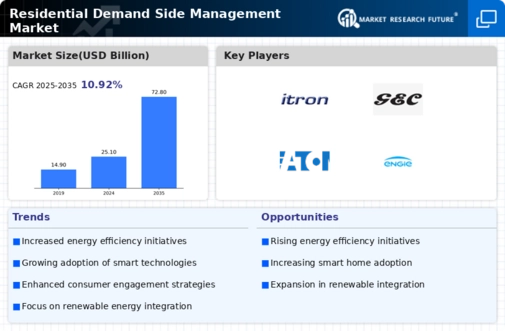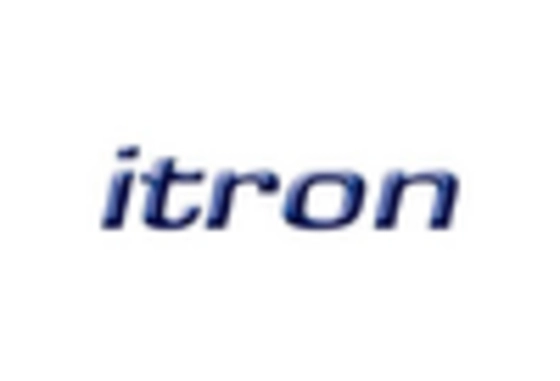Rising Energy Costs
Rising energy costs are a significant driver influencing the Residential Demand Side Management Market. As energy prices continue to escalate, homeowners are increasingly seeking ways to manage their energy consumption more effectively. This trend has led to a growing interest in demand-side management solutions that can help reduce energy bills. Data indicates that residential energy prices have risen by approximately 15% over the past five years, prompting consumers to adopt energy-efficient practices and technologies. Consequently, the demand for smart meters, energy management systems, and other demand-side management tools is likely to increase. This shift not only aids in cost reduction but also encourages a more sustainable approach to energy consumption, thereby enhancing the overall appeal of the Residential Demand Side Management Market.
Consumer Awareness and Education
Consumer awareness and education regarding energy efficiency are vital drivers for the Residential Demand Side Management Market. As individuals become more informed about the environmental and financial benefits of energy conservation, there is a noticeable shift in consumer behavior. Educational campaigns and resources provided by utility companies and environmental organizations have significantly raised awareness about the importance of managing energy consumption. Data suggests that informed consumers are 40% more likely to adopt energy-efficient practices and technologies. This heightened awareness not only drives demand for energy management solutions but also encourages a collective effort towards sustainability. Consequently, the Residential Demand Side Management Market stands to gain from this trend, as more consumers seek to implement effective demand-side management strategies in their homes.
Government Policies and Incentives
Government policies and incentives play a crucial role in shaping the Residential Demand Side Management Market. Many governments are implementing programs aimed at promoting energy efficiency and reducing carbon emissions. These initiatives often include financial incentives for homeowners who invest in energy-efficient technologies and demand-side management solutions. For instance, tax credits and rebates for energy-efficient appliances have become increasingly common, encouraging consumers to adopt practices that align with sustainability goals. Recent reports indicate that such incentives have led to a 25% increase in the adoption of energy-efficient technologies among residential consumers. As these policies continue to evolve, they are likely to further stimulate growth within the Residential Demand Side Management Market, fostering a culture of energy conservation and efficiency.
Integration of Renewable Energy Sources
The integration of renewable energy sources into residential energy systems is a pivotal driver for the Residential Demand Side Management Market. As homeowners increasingly adopt solar panels and wind turbines, the need for effective demand-side management becomes apparent. This integration allows for better energy utilization and reduces reliance on traditional energy sources. According to recent data, residential solar installations have surged, with a reported increase of over 20% in the last year alone. This trend not only enhances energy independence but also aligns with broader sustainability goals, making demand-side management essential for optimizing energy consumption and storage. The Residential Demand Side Management Market is thus positioned to benefit from this shift towards renewable energy, as it facilitates the efficient management of energy generated from these sources.
Technological Advancements in Energy Management
Technological advancements in energy management systems are driving innovation within the Residential Demand Side Management Market. The emergence of smart home technologies, including smart thermostats and energy monitoring devices, has transformed how consumers interact with their energy usage. These technologies enable homeowners to monitor and control their energy consumption in real-time, leading to more informed decisions regarding energy use. Recent statistics suggest that the adoption of smart home devices has increased by over 30% in the last two years, indicating a strong market trend. As these technologies become more accessible and affordable, the Residential Demand Side Management Market is likely to experience substantial growth, as consumers seek to leverage these advancements for improved energy efficiency and cost savings.


















Leave a Comment